Grow cherry tomatoes at home, even if you think you don’t have a green thumb! I know, I know, the idea of cultivating your own juicy, sun-ripened cherry tomatoes might seem like something only seasoned gardeners can achieve. But trust me, with a few clever DIY tricks and hacks, you can be popping these sweet little bursts of flavor straight from your own backyard (or balcony!) in no time.
The history of tomatoes is fascinating, originating in South America and slowly making their way into global cuisine. For centuries, they’ve been a symbol of abundance and fresh, homegrown goodness. And while large-scale farming has made tomatoes readily available, there’s nothing quite like the taste and satisfaction of nurturing your own plant from seed to harvest.
Why do you need these DIY tricks? Well, let’s face it, gardening can be intimidating! From choosing the right soil to battling pests, there’s a lot to learn. But these simple, budget-friendly hacks will demystify the process and empower you to grow cherry tomatoes at home successfully, regardless of your experience level. Imagine the joy of adding fresh, organic cherry tomatoes to your salads, snacks, and sauces, all while saving money and reducing your carbon footprint. Let’s get started and unlock the secrets to a bountiful cherry tomato harvest!
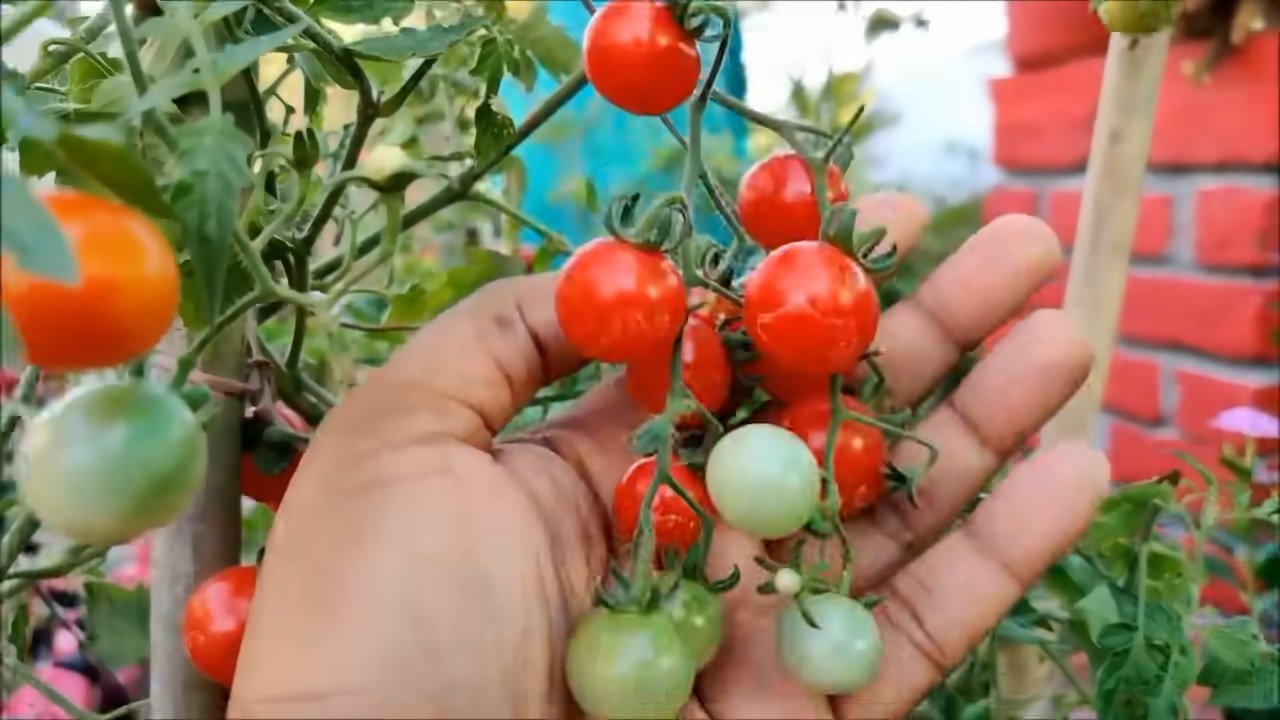
Growing Cherry Tomatoes at Home: A Beginner’s Guide
Hey there, fellow gardening enthusiasts! Ever dreamt of popping sweet, juicy cherry tomatoes straight from your own backyard? Well, dream no more! Growing cherry tomatoes at home is surprisingly easy and incredibly rewarding. I’m going to walk you through everything you need to know, from choosing the right variety to harvesting your bounty. Let’s get our hands dirty!
Choosing the Right Cherry Tomato Variety
Before we even think about planting, we need to pick the perfect cherry tomato variety for your space and taste. There are tons of options, each with its own unique characteristics. Here are a few of my favorites:
* ‘Sungold’: These are incredibly sweet and have a beautiful golden-orange color. They’re a bit more prone to cracking, but the flavor is worth it!
* ‘Sweet Million’: As the name suggests, these produce a massive amount of small, red cherry tomatoes. They’re very reliable and disease-resistant.
* ‘Black Cherry’: These have a rich, complex flavor and a beautiful dark purple color. They’re a bit more challenging to grow than some other varieties, but the taste is amazing.
* ‘Grape Tomato’: These are oblong and have a slightly thicker skin, making them less prone to cracking. They’re also very sweet and flavorful.
* ‘Yellow Pear’: These are cute, pear-shaped, yellow tomatoes with a mild, sweet flavor. They’re great for adding color to salads.
Consider your climate, the amount of space you have, and your personal taste preferences when making your choice.
Getting Started: Seeds vs. Seedlings
You have two main options for starting your cherry tomato plants: from seeds or from seedlings (also known as transplants).
* Starting from Seeds: This is the more economical option, and it gives you more control over the entire growing process. However, it requires a bit more time and effort. You’ll need to start your seeds indoors about 6-8 weeks before the last expected frost.
* Buying Seedlings: This is the easier option, especially for beginners. You can find healthy seedlings at most garden centers in the spring. Just make sure to choose plants that are healthy and vigorous, with no signs of disease or pests.
I personally love starting from seeds, but if you’re short on time or just want a head start, seedlings are a great choice.
Step-by-Step Guide to Growing Cherry Tomatoes
Okay, let’s get down to the nitty-gritty! Here’s a detailed guide to growing cherry tomatoes at home:
Starting from Seeds (Optional)
1. Gather Your Supplies: You’ll need seed starting trays or small pots, seed starting mix (a light, sterile soil mix), cherry tomato seeds, a spray bottle, and a heat mat (optional but recommended).
2. Sow the Seeds: Fill your seed starting trays or pots with seed starting mix. Moisten the mix with the spray bottle. Sow 2-3 seeds per cell or pot, about 1/4 inch deep.
3. Provide Warmth and Light: Place the trays or pots on a heat mat (if using) and cover them with a clear plastic dome or plastic wrap to create a humid environment. Keep the soil consistently moist but not soggy. Once the seeds germinate (usually within 7-14 days), remove the plastic and place the seedlings under a grow light or in a sunny window.
4. Thin the Seedlings: Once the seedlings have their first true leaves (the second set of leaves that appear after the initial seed leaves), thin them to one seedling per cell or pot. Choose the strongest, healthiest seedling and snip off the others at the soil line.
5. Harden Off the Seedlings: About a week before you plan to transplant the seedlings outdoors, you’ll need to “harden them off.” This means gradually exposing them to outdoor conditions to help them acclimate. Start by placing them outside in a sheltered spot for an hour or two each day, gradually increasing the amount of time they spend outdoors over the course of a week.
Transplanting Seedlings (Whether You Started from Seed or Bought Them)
1. Choose the Right Location: Cherry tomatoes need at least 6-8 hours of sunlight per day. Choose a location in your garden that gets plenty of sun. The soil should be well-draining and rich in organic matter.
2. Prepare the Soil: Amend the soil with compost or other organic matter to improve its fertility and drainage. You can also add a slow-release fertilizer to give your plants a boost.
3. Dig the Holes: Dig holes that are slightly larger than the root balls of your seedlings. Space the holes about 2-3 feet apart, depending on the variety. Some bush varieties can be planted closer together.
4. Plant the Seedlings: Gently remove the seedlings from their containers. If the roots are pot-bound (tightly circling the root ball), gently loosen them with your fingers. Place the seedlings in the holes and backfill with soil. Bury the stem up to the first set of leaves. This will encourage the plant to develop more roots along the buried stem, resulting in a stronger, healthier plant.
5. Water Thoroughly: Water the seedlings thoroughly after planting. This will help settle the soil around the roots and get them off to a good start.
6. Add Support: Cherry tomato plants can get quite tall and heavy, so they’ll need some support. You can use stakes, cages, or trellises. I prefer using cages because they provide good support and allow the plants to grow naturally. Install the support at the time of planting to avoid damaging the roots later.
Caring for Your Cherry Tomato Plants
1. Water Regularly: Cherry tomatoes need consistent watering, especially during hot, dry weather. Water deeply and regularly, aiming to keep the soil consistently moist but not soggy. Avoid watering the foliage, as this can encourage fungal diseases. Drip irrigation or soaker hoses are a great way to water tomatoes efficiently.
2. Fertilize Regularly: Cherry tomatoes are heavy feeders, so they’ll need regular fertilization. Use a balanced fertilizer specifically formulated for tomatoes, following the instructions on the label. I like to use a liquid fertilizer every 2-3 weeks.
3. Prune Your Plants: Pruning can help improve air circulation and encourage fruit production. Remove suckers (the small shoots that grow between the main stem and the branches) to direct the plant’s energy towards fruit production. You can also remove any yellowing or diseased leaves.
4. Watch Out for Pests and Diseases: Keep an eye out for common tomato pests and diseases, such as aphids, whiteflies, tomato hornworms, and early blight. If you spot any problems, take action immediately. There are many organic and non-organic options for pest and disease control. I prefer using organic methods whenever possible.
5. Mulch Around the Plants: Mulching around your tomato plants can help retain moisture, suppress weeds, and regulate soil temperature. Use organic mulch, such as straw, hay, or wood chips.
Harvesting Your Cherry Tomatoes
This is the best part! Cherry tomatoes are usually ready to harvest about 60-80 days after transplanting.
1. Look for Ripe Tomatoes: The tomatoes should be fully colored and slightly soft to the touch. They should also easily detach from the vine.
2. Harvest Regularly: Harvest your cherry tomatoes regularly to encourage the plant to produce more fruit.
3. Enjoy Your Harvest: Eat your cherry tomatoes fresh, add them to salads, or use them in your favorite recipes. You can also preserve them by canning, freezing, or drying.
Troubleshooting Common Problems
Even with the best care, you might encounter some problems while growing cherry tomatoes. Here are a few common issues and how to address them:
* Blossom End Rot: This is caused by a calcium deficiency and results in a dark, leathery spot on the bottom of the tomato. To prevent blossom end rot, make sure your soil is rich in calcium and water your plants consistently. You can also add calcium to the soil by using bone meal or crushed eggshells.
* Cracking: This is caused by fluctuations in watering. To prevent cracking, water your plants consistently and avoid overwatering. Choose varieties that are less prone to cracking.
* Pests: Aphids, whiteflies, and tomato hornworms are common tomato pests. You can control them by using insecticidal soap, neem oil, or hand-picking them off the plants.
* Diseases: Early blight, septoria leaf spot, and fusarium wilt are common tomato diseases. To prevent diseases, choose disease-resistant varieties, provide good air circulation, and avoid watering the foliage. If you spot any signs of disease, remove the affected leaves and treat the plants with a fungicide.
Extra Tips for Success
* Rotate Your Crops: Avoid planting tomatoes in the same location year after year. This can help prevent soilborne diseases.
* Companion Planting: Plant basil,
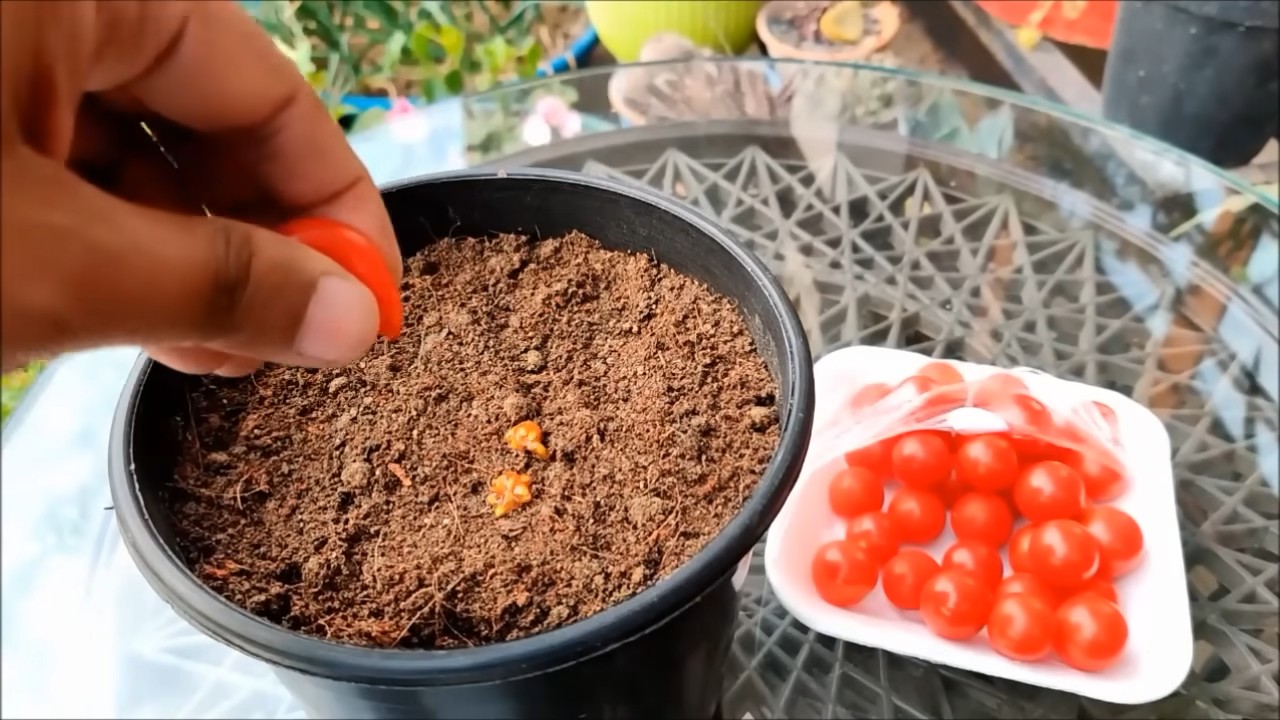
Conclusion
So, there you have it! Growing cherry tomatoes at home is not only achievable, but it’s also incredibly rewarding. Forget those bland, store-bought tomatoes that lack that burst of sunshine flavor. With a little effort and this simple DIY trick, you can cultivate your own supply of sweet, juicy cherry tomatoes right in your backyard, balcony, or even on a sunny windowsill.
Why is this a must-try? Because it puts you in control. You control the quality of the soil, the amount of sunlight, and the watering schedule, ensuring that your tomatoes are grown with love and without harmful chemicals. Plus, there’s nothing quite like the satisfaction of harvesting your own food and sharing it with family and friends. Imagine the delicious salads, snacks, and sauces you can create with your homegrown bounty!
But the fun doesn’t stop there. Feel free to experiment with different varieties of cherry tomatoes. Try growing the classic red cherry tomatoes, or branch out with yellow pear tomatoes, black cherry tomatoes, or even the striped green zebra cherry tomatoes. Each variety offers a unique flavor profile and adds visual appeal to your garden and your plate.
You can also explore different growing methods. While we’ve focused on container gardening, you can also grow cherry tomatoes in raised beds or directly in the ground, depending on your space and preferences. Consider adding companion plants like basil, marigolds, or onions to deter pests and improve the flavor of your tomatoes.
And don’t be afraid to get creative with your support systems. While tomato cages are a popular option, you can also use stakes, trellises, or even repurposed materials like old ladders or branches to support your growing plants. The possibilities are endless!
Ultimately, the key to success is to be patient, observant, and willing to learn. Pay attention to your plants’ needs, adjust your watering and fertilizing schedule as needed, and don’t be discouraged by occasional setbacks. Growing cherry tomatoes at home is a journey, and every step of the way is an opportunity to learn and grow.
We are confident that with this DIY trick, you’ll be enjoying a plentiful harvest of delicious cherry tomatoes in no time. So, grab your seeds, soil, and containers, and get started today! We can’t wait to hear about your experiences. Share your photos, tips, and stories with us in the comments below. Let’s create a community of passionate home gardeners and spread the joy of growing our own food. Happy gardening!
Frequently Asked Questions (FAQ)
What kind of soil is best for growing cherry tomatoes?
The ideal soil for growing cherry tomatoes is well-draining, fertile, and slightly acidic, with a pH between 6.0 and 6.8. A good potting mix specifically formulated for vegetables is a great option for container gardening. You can also amend your garden soil with compost, aged manure, or other organic matter to improve its drainage and fertility. Avoid using heavy clay soil, as it can retain too much moisture and lead to root rot.
How much sunlight do cherry tomatoes need?
Cherry tomatoes need at least 6-8 hours of direct sunlight per day to thrive. Choose a sunny location for your plants, whether it’s a south-facing balcony, a sunny garden bed, or a windowsill that receives plenty of light. If you don’t have enough natural sunlight, you can supplement with grow lights.
How often should I water my cherry tomato plants?
Water your cherry tomato plants deeply and regularly, especially during hot, dry weather. The frequency of watering will depend on the weather, the size of your container, and the type of soil you’re using. As a general rule, water when the top inch of soil feels dry to the touch. Avoid overwatering, as this can lead to root rot. It’s best to water in the morning so that the foliage has time to dry before nightfall, which can help prevent fungal diseases.
What kind of fertilizer should I use for cherry tomatoes?
Cherry tomatoes benefit from regular fertilization, especially during the fruiting stage. Use a balanced fertilizer with equal amounts of nitrogen, phosphorus, and potassium (e.g., 10-10-10) or a fertilizer specifically formulated for tomatoes. Follow the instructions on the fertilizer package for application rates and frequency. You can also use organic fertilizers like compost tea, fish emulsion, or bone meal.
How do I prevent pests and diseases from attacking my cherry tomato plants?
There are several things you can do to prevent pests and diseases from attacking your cherry tomato plants. First, choose disease-resistant varieties. Second, practice good sanitation by removing any dead or diseased leaves and keeping the area around your plants clean. Third, water your plants at the base to avoid wetting the foliage, which can promote fungal diseases. Fourth, use insecticidal soap or neem oil to control common pests like aphids, whiteflies, and spider mites. Finally, consider companion planting with herbs like basil or marigolds, which can deter pests.
When should I harvest my cherry tomatoes?
Cherry tomatoes are typically ready to harvest about 60-80 days after planting. The tomatoes should be fully colored, slightly soft to the touch, and easily detach from the vine. Harvest your tomatoes regularly to encourage continued production.
Can I grow cherry tomatoes indoors?
Yes, you can grow cherry tomatoes indoors, but you’ll need to provide them with enough light and warmth. Choose a sunny windowsill or use grow lights to supplement natural light. Make sure your plants have good air circulation to prevent fungal diseases.
My cherry tomato plant is producing lots of leaves but no fruit. What should I do?
This could be due to several factors, including too much nitrogen fertilizer, insufficient sunlight, or high temperatures. Try reducing the amount of nitrogen fertilizer you’re using and make sure your plants are getting at least 6-8 hours of direct sunlight per day. If temperatures are consistently above 90°F (32°C), the pollen may not be viable, so try to provide some shade during the hottest part of the day.
Can I save seeds from my cherry tomatoes to plant next year?
Yes, you can save seeds from your cherry tomatoes, but keep in mind that if you’re growing hybrid varieties, the seeds may not produce plants that are true to type. To save seeds, allow the tomatoes to fully ripen on the vine. Then, scoop out the seeds and pulp and place them in a jar with a little water. Let the mixture ferment for a few days, stirring occasionally. This will help remove the gelatinous coating around the seeds. After a few days, rinse the seeds thoroughly and spread them out on a paper towel to dry completely. Store the dried seeds in an airtight container in a cool, dark place.
What are some creative ways to use my homegrown cherry tomatoes?
The possibilities are endless! You can use your homegrown cherry tomatoes in salads, snacks, sauces, soups, stews, and more. Try roasting them with herbs and garlic for a delicious side dish, or make a simple cherry tomato pasta sauce. You can also pickle them, dry them, or freeze them for later use. Get creative and experiment with different recipes to find your favorites!

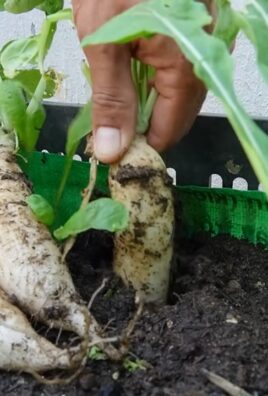
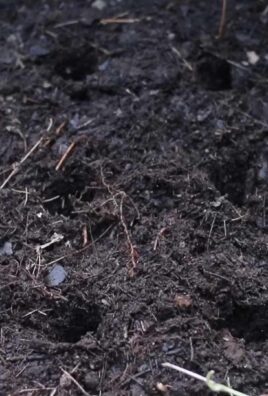
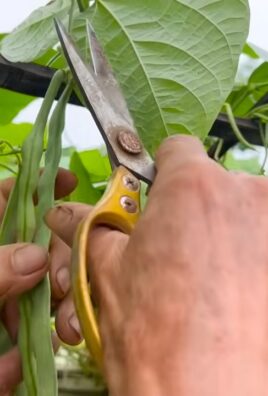
Leave a Comment